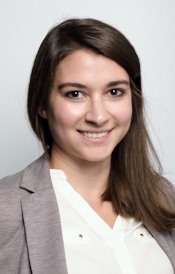Program Information
Feasibility Study for Assessing Post Radiation Changes in Liver Oligometastasis PTV and Liver Contour Volumes Using Velocity AI Structure Guided Deformation
S Kuznetsova1*, E Hubley2 , P Grendarova3 , K Thind1,2,3 , N Ploquin1,2,3 , (1) Department of Physics and Astronomy, University of Calgary, Calgary, AB, Canada (2) Department of Medical Physics, Tom Baker Cancer Centre, Alberta Health Services, Calgary, Alberta, Canada (3)Department of Oncology, University of Calgary, Calgary, Alberta, Canada
Presentations
SU-K-708-15 (Sunday, July 30, 2017) 4:00 PM - 6:00 PM Room: 708
Purpose: To assess the feasibility of deformable registration of the PTV contour from the planning CT onto the post-SBRT MRI employing Velocity AI(Velocity Medical Systems, Atlanta, GA) structure-based deformation tool.
Methods: Diagnostic follow-up T1-contrast MRI scans of nine patients previously treated with liver SBRT were obtained. The MRI-liver volume was contoured and independently verified by a radiation oncologist. Using Velocity AI, MRI-liver contours were deformed on to CT-liver contour using structure-guided deformation navigator in Velocity AI for each patient. To obtain an estimate for PTV region on the MRI scan, the planning CT based PTV contour was transferred from CT to the MRI scan based on deformation matrix between liver contours in the two scans. Changes in deformed liver and PTV contour volumes were quantified.
Results: In seven out of nine patients PTV contour volume change (from -40% to +45%) was consistent with the liver contour volume change. In two out of nine cases, the increase in PTV contour volumes post-deformation was not consistent with the MRI versus CT liver contour volumes. These differences can be attributed to the shortcomings of deformation algorithm and contouring inconsistencies.
Conclusion: This feasibility study suggests for the following factors to be taken into account for future work: 1) consistency in contouring guidelines between CT and MRI; 2) Consistency in inter-patient contouring for patients being considered for the study; 3) Use of structure guided deformation navigator be limited to centrally located liver tumours; 4) Use of extended volume of interest in deformation for peripherally located liver tumours.
Contact Email:
